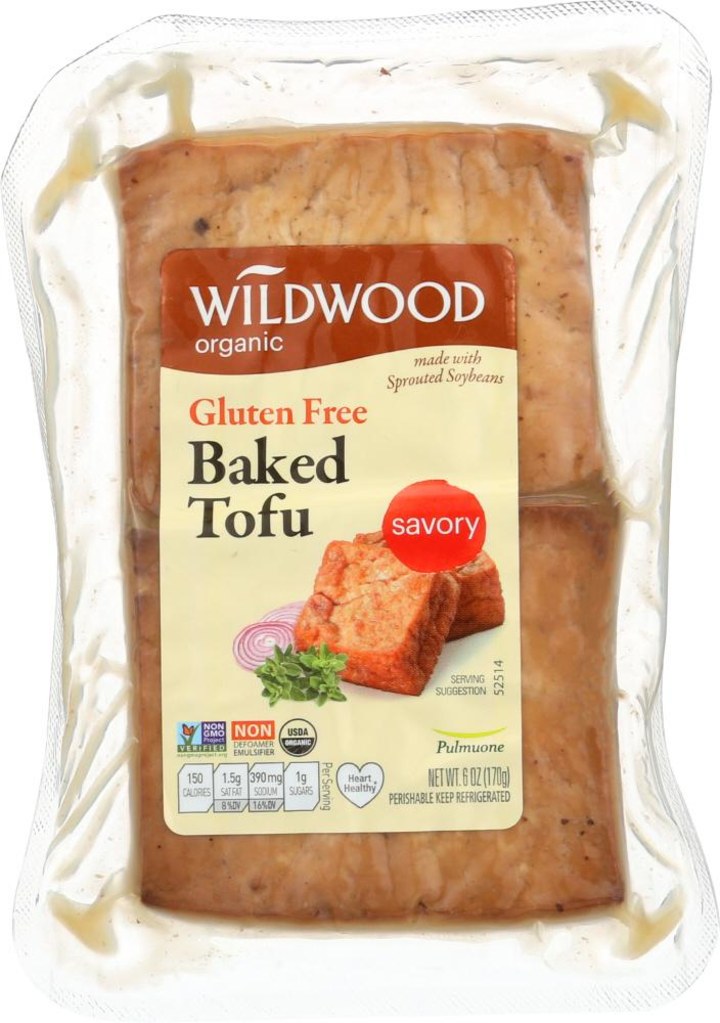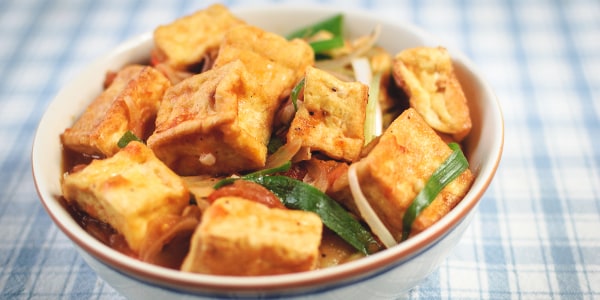Nearly a quarter of Americans say they’re eating more protein from plant sources than they were a year ago, according to a just-released food and health survey conducted on behalf of the International Food Information Council (IFIC). Still, the number of people who’ve tried a plant-based diet in the past year hasn’t budged from the year before.
Ali Webster, Ph.D., a registered dietitian and director of research and nutrition communications at the IFIC, said it signifies that people are experimenting more, but not necessarily making major changes to their culinary identity. “For most people, choosing plant protein doesn’t mean giving up animal protein — they’re eating both,” Webster explained.
If you’re curious about the plant-based protein trend or just want to add some new foods to your meal plan, here are some pointers — plus nine plant-based protein options, both whole and ready-made foods, to check out.
Should you try plant-based protein?
The short answer is yes! Including more plant-based protein in place of animal proteins can help lower the saturated fat in your diet, add more fiber and nutrients to your plate, and may help lower the risk of various health concerns. And, of course, swapping some of your animal foods for plant foods is a good way to reduce your environmental impact.
Upping your plant intake is easy! Try adding one of these whole plant-based proteins to your next meal:
1. Hemp Seeds
These super seeds contain 10 grams of protein in a three tablespoon serving. Hemp hearts are shelled seeds and are ready to eat straight out of the bag. Since they’re are about the size of rice grains, they’re not ideal for snacking. Instead, they’re easy to use as a topping for avocado toast, sauteed greens or oatmeal. Their mild flavor (think: macadamia nut or pine nut) makes them a natural addition to numerous meals and snacks.
2. Peanuts
While not a tree nut, peanuts pack more protein than any other nut, with 7 grams of this powerhouse nutrient per one ounce serving. What’s more, they have 3 grams of fiber and are a good source of magnesium, vitamin E and folate. Not only are they great for snacking, but they also add crunch to salads, stir-fries and overnight oats.
3. Quinoa
Whole grains contain some plant-based protein, but none are richer than quinoa (which is ironic since quinoa is actually a seed). For comparison’s sake, cooked quinoa has 8 grams of protein per cup, while the same portion of cooked oatmeal has 5 grams of protein. Quinoa can be swapped for other grains, like brown rice (which also has 5 grams of protein per cup) in just about every recipe. But you can also experiment with quinoa as a hot breakfast cereal by infusing it with seasonings, like cinnamon, and mixing it with unsweetened dried fruit and nuts. If you have leftover quinoa, sprinkle it over a salad or sauteed greens.
4. Pulses
This is the catch-all category for beans, lentils, chickpeas and peas — and they’re an easy way to boost your plant-based protein intake. Depending on the variety, these foods supply about 8 to 18 grams of protein per cup, as well as other nutrients, like fiber, folate and magnesium. If you’re new to these foods, try them in dishes you eat routinely. For instance, add peas to your mac and cheese, or, instead of egg salad, use chickpeas along with mayo and other seasonings. They’re also great in soups and stews.
Add these convenience products to make healthy eating even easier:
5. Barney Butter Unsweetened Powdered Almond Butter
Getting enough protein — particularly at breakfast — can sometimes be a challenge and a couple of tablespoons of a protein powder can help you get over the hurdle. This version is unsweetened, practically tasteless, and disintegrates easily in oatmeal and smoothies. A two tablespoon serving has 6 grams of protein, which may be plenty if you’re adding it to a meal with another protein source, such as plant-based milk, nuts or seeds. But if not, or if you’re an athlete or someone with higher calorie and protein needs, it’s easy to add more.
6. Beyond Meat Beyond Meatballs
If you’re curious about plant-based meats, try these meatballs in your next pasta dish. A serving with five meatballs has 19 grams of protein, primarily from peas. They’re already formed and seasoned, so you just have to dream up how to serve them. Meatball hero, anyone?
7. Dr. Praeger’s Perfect Burger

One of the easiest ways to try plant-based protein is a veggie burger, and this one delivers 20 grams from a pea source. Among its simple ingredients are sweet potato, butternut squash, and carrot purees, but they’re blended in, so picky eaters won’t notice them. Like any burger, the perfect way to eat it is with all the fixings served on a whole grain bun or English muffin.
8. Ripple Unsweetened Original Plant-Based Milk
While almonds have about 6 grams of protein per ounce, a cup of almond milk has about 1 gram. On the other hand, Ripple’s plant-based milk has 8 grams of pea-based protein — an even match for a cup of dairy milk. It’s also fortified with nutrients found in dairy milk, such as calcium, vitamin B12 and vitamin D. It’s the perfect plant-based companion for a bowl of cereal or oatmeal, and it also makes a great liquid base for smoothies.
9. Wildwood Organic Gluten-Free Baked Tofu

A three ounce serving of this sprouted tofu packs 16 grams of protein, including all nine essential amino acids. Tofu soaks up flavor well, but many people are unfamiliar with pressing it to remove the liquids, and cooking it. This handy product is pre-seasoned and cooked, so you don’t have to figure it out! If you’re new to tofu, try cutting it into cubes and adding it to stir-fried veggies.
If you’re not used to plant-based proteins, start with the more familiar ones, like peanuts and peanut butter, but try using them in interesting, new ways. For example, instead of PB&J, use peanut butter to make a sauce for stir-fries or a dip for veggies. Alternatively, start with a familiar meal and swap the protein source. Taco lover? Try replacing some or all of the ground beef with black beans.
You may have heard that you need to combine plant proteins since most plant foods lack one or more of the nine essential amino acids that animal foods supply. However, this advice is outdated. As long as you’re getting enough plant protein from a variety of sources throughout the day, you’ll get all of the essential amino acids you need. Your liver stores them, so they’re available when needed as long as you’re consuming a range of plant proteins or eating a mix of plant and animal foods, and meeting your needs for calories and protein.
Need some cooking inspiration? Try these recipes:

Mike Smith / TODAY

Nathan R. Congleton / TODAY

Melissa Clark

Getty Images stock
Related:




